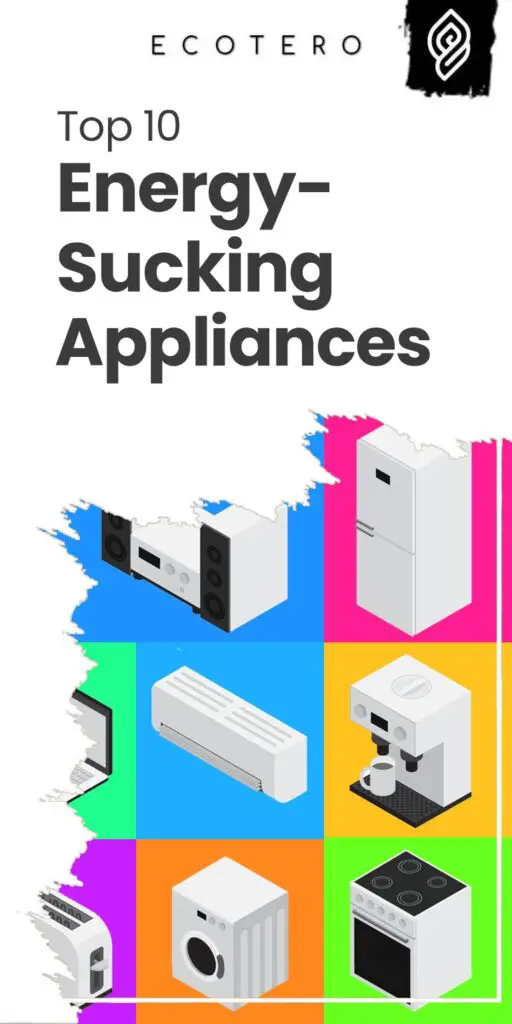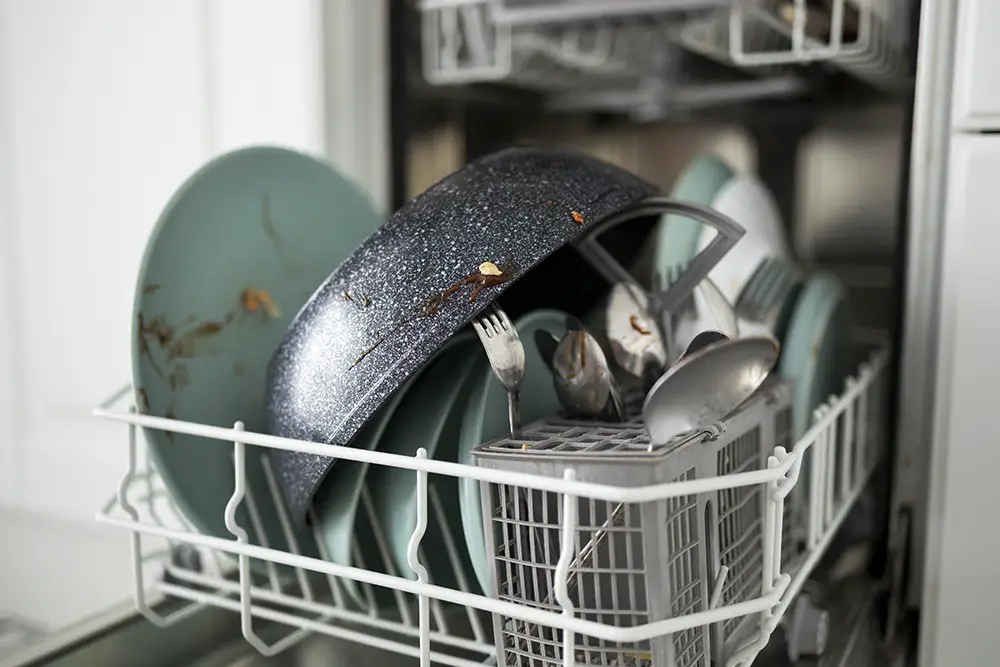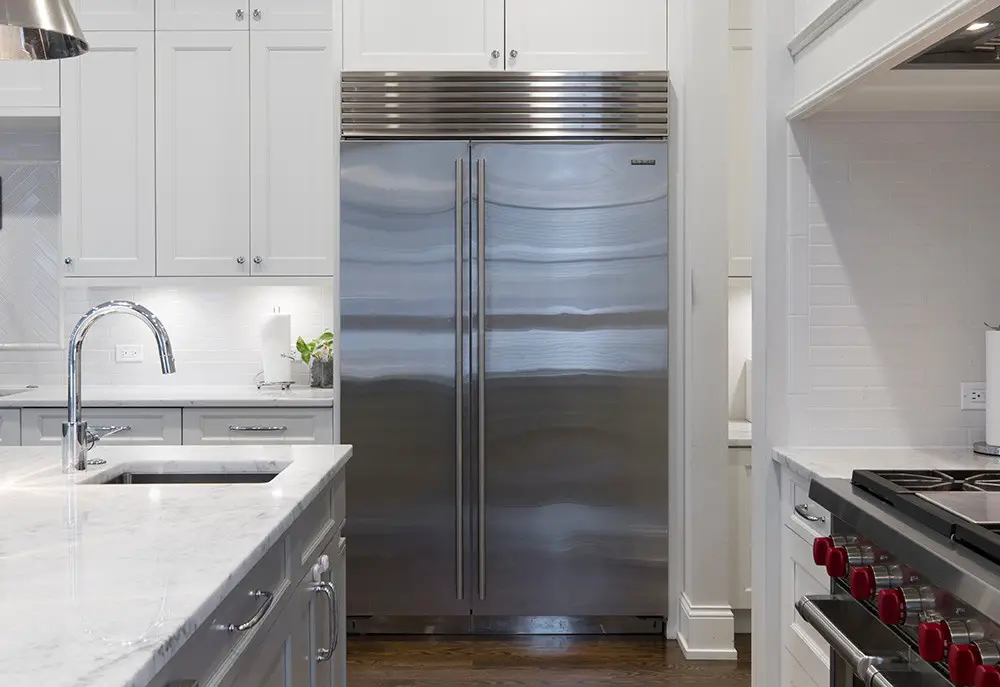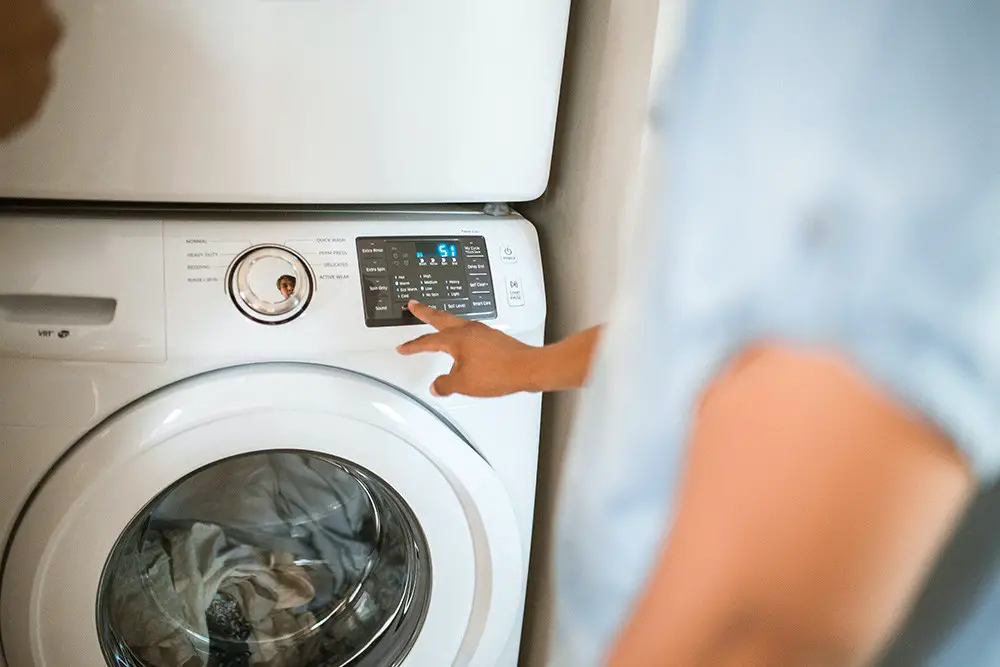What Appliance uses the most power in a house? – Top 10 Hidden Electric Suckers
As an Amazon Associate, Ecotero earns from qualifying purchases.
You’re probably familiar with the saying, “Turn off the lights when you leave a room”. But did you know that some of the appliances in your home use far more energy than just keeping the lights on?

So, what appliance uses the most power in a house? How many kilowatts per day is normal?
Well, from refrigerators to air conditioners to hot water heaters, many of the devices in our homes can have a surprising impact on our electricity bills. That’s why it’s important to know which appliances are using the most energy and how we can avoid over-usage.
So let’s take a look at exactly what uses the most power in your house and what you can do to stay energy-efficient. We’ll break down all the appliances, their average power usage, and how you can reduce your power consumption.
Let’s get started!
Common Household Appliances & Their Power Usage
When it comes to energy use, everything counts – not just the major appliances we have in our homes. To understand what uses the most power in a house, it’s important to start with the basics – how much power does your favorite appliance use?
The table below shows some household appliances, along with their average power usage. Keep in mind that this depends on the model and size of each appliance.
| Common Household Appliance | Average Power Usage (Watts) |
|---|---|
| Dishwasher | 1,400 – 2,000 |
| Electric Fan Heater | 1,400 – 2,000 |
| Refrigerator | 500 – 1,500 |
| Washing Machine | 500 – 1,000 |
| Tumble Dryer | 3,000 – 6,000 |
| Air Conditioner | 1,200 – 1,800 |
| Coffee Maker | 800 – 1,400 |
| Water Heater | 2,400 – 4,800 |
| Electric Stove | 2,000 – 4,800 |
| Home Theatre | 300 – 400 |
As you can see, some of the appliances we use on a daily basis can have a dramatic effect on our power consumption. But what can we do to reduce the amount of energy each appliance uses?
What Appliances consume Electricity Even When Turned Off or on Standby Mode?
Also known as “vampire appliances”, these appliances consume electricity even when powered down or put in standby mode.
Below is a list of some common appliances and their estimated standby power consumption, but keep in mind that these figures are approximate and may differ based on factors such as age, efficiency, and features of the appliance:
| Vampire Appliances | Estimated Power Consumption on Standby | Energy Consumption (Per Month) |
|---|---|---|
| Television | 1 – 6 watts | 0.72 – 4.32 kWh |
| Desktop Computer | 6 – 8 watts | 4.32 – 5.76 kWh |
| Modem | 3 – 5 watts | 2.16 – 3.6 kWh |
| Stereos | 1 – 6 watts | 0.72 – 4.32 kWh |
| DVD or Blu-Ray players | 0.5 – 5 watts | 0.36 – 3.6 kWh |
| Printers | 1 – 6 watts | 0.72 – 4.32 kWh |
| Central heating furnace | 2 – 10 watts | 1.44 – 7.20 kWh |
| Microwaves | 1 – 3 watts | 0.72 – 2.16 kWh |
| Coffee makers | 0.5 – 2 watts | 0.36 – 1.44 kWh |
| Game consoles | 1 – 3 watts (up to 10 watts in instant-on mode) | 0.72 – 2.16 kWh |
| Total | 8 – 41 watts | 12.24 – 38.88 kWh |
Though it might seem like these appliances are not using much power, but as you accumulate them over a month, you will see significant usage.
The assumption above is that the appliance is set on standby mode for 24 hours a day and accumulates over a month.
And, assuming the cost of electricity is 10.42 cents per kilowatt-hour (kWh), you will be adding between $1.28 to $4.05 monthly or $15.36 to $48.60 a year to your electricity bill unnecessarily.
Hence, to save on your electric bill, try unplugging them when they’re not in use—or if they need to stay plugged in, invest in surge protectors with remote control outlets so you can easily turn them off and on as needed.
Top 10 Appliances that Use the Most Electricity
| Common Household Appliance | Average Power Usage (Watts) | Daily Usage | Energy Consumption (Per Month) | Energy Consumption (Per Year) |
|---|---|---|---|---|
| Dishwasher | 1,400 – 2,000 | 2 hours | 84 – 120 kWh | 1,022 – 1,460 kWh |
| Electric Fan Heater | 1,500 – 3,000 | 3 hours | 135 – 270 kWh | 1,642.5 – 3,285 kWh |
| Refrigerator | 500 – 1,500 | 24 hours | 360 – 1,080 kWh | 4,380 – 13,140 kWh |
| Washing Machine | 500 – 1,000 | 1.5 hours | 22.5 – 45 kWh | 273.75 – 547.5 kWh |
| Tumble Dryer | 3,000 – 6,000 | 1.5 hours | 135 – 270 kWh | 1,642.5 – 3,285 kWh |
| Air Conditioner | 1,200 – 1,800 | 7 hours | 252 – 378 kWh | 3,066 – 4,599 kWh |
| Coffee Maker | 800 – 1,400 | 1.5 hours | 36 – 63 kWh | 438 – 766.5 kWh |
| Water Heater | 2,400 – 4,800 | 2 hours | 144 – 288 kWh | 1,752 – 3,504 kWh |
| Electric Stove | 2,000 – 4,800 | 2 hours | 120 – 288 kWh | 1,460 – 3,504 kWh |
| Home Theatre | 300 – 400 | 5 hours | 45 – 60 kWh | 547.5 – 730 kWh |
| Total | 13,600 – 26,700 | n/a | 1,333.5 – 2,862 kWh | 16,224.25 – 34,821 kWh |
Dishwashers
Dishwashers consume an astronomically high amount of electricity. That is why it’s essential to make sure yours runs as efficiently as possible; on average, dishwashers consume around 1.2 kWh (kilowatt-hours) per cycle.

To maximize energy efficiency, fill your dishwasher fully before running it and select the shortest cycle that still gets the job done. If you have an energy-conscious model, you might even be able to choose a low-power or energy-saving mode. Some of today’s newest models come with adjustable temperature and water levels which can be set more efficiently than regular washing cycles while still getting all of your dishes washed.
Finally, make sure the filters on your dishwasher are always kept clean. Clogged filters impede airflow and stop water from drying dishes properly—causing the machine to waste energy by running longer cycles or extra rinses in order to get dishes dry.
Electric Fan Heater
You might expect big ones like refrigerators and washing machines to take the top spots. But you might be surprised that electric fan heaters come in third! That’s right! These heaters use a lot of energy in order to circulate hot air around your home.
So why are electric fan heaters so energy-intensive? For one, they usually only heat one room. This means that they have to work extra hard – and consume more energy – in order to warm up the space effectively. Furthermore, many people leave their electric fan heater on for extended periods of time when it isn’t necessary.
Electricity Consumption
An electric fan heater can consume anywhere from 1500W (1.5kW) up to 3000W (3kW), depending on its size and output settings. That means if you leave one running at full power for an hour each day, that equates to 90kWh per month! That should certainly make anyone think twice before turning it on!
Other Considerations
When using an electric fan heater, there are a couple of other things to consider:
- Room size: Always buy the correct size heater according to the room size – a bigger heater will not be more efficient but will just consume more electricity instead!
- Heating setting: Most models come with multiple heating settings, so try and keep it on a lower one where possible.
- Timer: Using a timer is essential as it allows you to pre-program when and how long your heater runs for – no need for
Refrigerators and Freezers
Number four on the list is refrigerators and freezers. Believe it or not, these appliances use an average of 14% of home energy use worldwide. Why? It all has to do with their 24/7 operation cycle. That means they’re always running, even when you may not be needing the cold air or food stored inside.

Fortunately, there are a few things you can do to reduce the energy use of refrigerators and freezers, such as:
- Keeping them at the right temperature — usually around 37°F for fridges and 0°F for freezers
- Closing the door quickly after getting what you need from inside
- Making sure all coils are clean so that the appliance runs more effectively
- Checking for any air leaks around seals and gaskets
- Buying a refrigerator or freezer that has an Energy Star label
By taking steps like these, you can ensure your refrigerator and freezer don’t waste excessive amounts of electricity in your home — saving you money in the long run.
Washing Machine
When it comes to appliance energy use, you’d be surprised just how much electricity can be used with a washing machine. Your washing machine is often one of the most power-hungry appliances in your home, using anywhere from 1,800 to 4,000 watts per hour depending on its size and how often you use it.

Think about it—you fill your machine with hot or cold water, its motor agitates the clothes around, and then it has to spin the clothes in order to dry them. It adds up quickly!
But there are ways to save energy when washing your machine. One solution is making sure your loads are only as big as necessary. Don’t waste water by overfilling. Furthermore, avoid running any small loads as that’s inefficient in terms of energy usage. Furthermore, try using cold water for most wash cycles–not only does this cut costs but also extends the life of your laundry items! Lastly, look out for energy-saving models–they use significantly less energy compared to regular washers!
Tumble Dryer
Your tumble dryer is one of the top 10 appliances that consume the most electricity. It can use up to three to six times more power than a washing machine!
Why does your tumble dryer consume so much electricity?
Size Matters
It’s not just about the size of your tumble dryer, but how quickly it heats up and how much airflow it needs. The bigger your tumble dryer and the higher its temperature, the more energy it uses.
Drying Time
The time it takes for your tumble dryer to get clothes fully dry is also a factor—the longer it takes, the more electricity it uses. That’s because heat pump systems, which are particularly efficient models, take longer to get clothes completely dry than vented or condenser systems.
Fortunately, there are ways you can make sure you’re using your tumble dryer efficiently:
- Make sure only to put small loads in and use different drying programs for different fabrics to get them done faster.
- Consider buying an Energy Star rated model with high ratings for efficiency and optimal performance.
- Make sure to clean out the lint filter after every use as clogged lint filters can hinder airflow and increase drying times, leading to higher energy bills in the long run.
- Try line-drying some items when you can—give them a good spin in the washing machine first so they don’t have too much creasing and shaking helps too!
Air Conditioners
Air conditioners are one of the biggest energy guzzlers in a home, especially during peak summer months when they consume an incredible amount of electricity.
There are some easy steps you can take to reduce their energy use, such as making sure your unit is suitable for your space and having regular maintenance performed.
Why are air conditioners so power-hungry?
Air conditioners have high-powered motors that draw quite a bit of electricity when they turn on and off. The same is true with other parts like the fan motor, compressor, and control system—all components that draw large amounts of electricity when in operation.
Temperature differences
The bigger the temperature difference between inside and outside your home, the more work your AC needs to do to maintain a comfortable indoor temperature. So if it’s really hot outside, it stands to reason that your AC will be working harder for longer periods of time than if it’s milder outside.
So remember: air conditioners use quite a bit of power—but if you keep them well maintained and install the right size unit for your space, you can minimize their electricity usage!
Coffee Machine
Do you like your coffee freshly brewed in the morning? Then you might be surprised to learn that coffee makers are a surprisingly big power drainer. On average, coffee machines use 800 to 1,400 watts of power when in operation; more if you’re making multiple cups at once.
So how can you ensure your coffee maker isn’t using more energy than necessary? Here are a few things to keep in mind:
- Unplug the device after each use;
- Clean the machine regularly;
- Turn off the hot plate when not in use; and
- Match the water level with the amount of coffee being brewed – no more, no less.
By taking these small steps, you can avoid wasting unnecessary energy and save some money on your electricity bill. Now that’s something worth raising a cup of joe for!
Electric Water Heaters
Chances are, you have an electric water heater in your home or business. Did you know they tend to be the second-highest energy user in a building? Electric water heaters use power to maintain water at the temperature set on the thermostat – and can use up a significant amount of electricity!
That doesn’t have to mean you have to give up the convenience of hot showers and baths–it just means that you should pay attention to how much energy your electric water heater uses! Here are a few tips for cutting back on energy bills:
Lower the Thermostat Setting
Most electric water heaters come with a factory preset temperature of 140°F. You can lower this setting and still get plenty of hot water for your needs by decreasing it by 10°F. That small change could end up saving you around 5% in energy costs!
Insulate the Tank
Insulating your electric water heater tank is an easy DIY project that can help reduce energy use. An insulation blanket can help keep the warm air inside the tank, instead of having it slowly escape into the room. Look for an insulation blanket made specifically for your make and model of the electric water heater.
Upgrade Your Water Heater
If your electric water heater is more than 10 years old, it may be time to consider replacing it with a more energy-efficient model. Modern models use less power than older ones and may even qualify for tax credits or other incentives!
Electric Stove
Did you know that electric stoves consume an astronomically high amount of power each hour? Some models can draw up to 8,000 watts per hour when in use!
Why do electric stoves consume so much power?
Electric stoves are powerful appliances that require a significant amount of energy to keep their elements hot enough for cooking food. Even when turned off, the stove may still be drawing energy in order to maintain its warmth.
How can you reduce the energy consumption of your stove?
With a few simple steps, you can take to reduce how much energy your stove uses. For instance:
- Cleaning your coils regularly ensures they perform at their best and consume less energy;
- Don’t preheat unnecessarily;
- Choose pans with flat bottoms that fit the size of the element; and
- Use a pressure cooker for faster cooking times that don’t require as much electricity.
Home Theatre
Did you know that your home theater might be one of the biggest power guzzlers in your home? That’s right, that big screen TV and all its related components is consuming more electricity than you might realize.
Here are just some of the items in your home theater system that could be contributing to higher energy bills:
- A large flat-screen television
- A digital video recorder (DVR)
- Streaming media devices such as an Amazon Fire Stick or Apple TV
- Game consoles like PlayStation or Xbox
- Soundbar, amplifier, and other speakers
- Blu-ray/DVD player
The total wattage used by all these appliances can add up quickly. That’s why it’s a good idea to unplug everything when not in use, and to consider replacing inefficient models with those that are Energy Star certified. Doing so will help reduce your electricity consumption and monthly bills.
Top 10 Most Expensive Appliances to Run Each Year
Again, assuming the cost of electricity is 10.42 cents per kilowatt-hour (kWh), your monthly bill
| Common Household Appliance | Energy Consumption (Per Month) | Monthly Cost | Energy Consumption (Per Year) | Yearly Cost |
|---|---|---|---|---|
| Dishwasher | 84 – 120 kWh | $8.75 – $12.50 | 1,022 – 1,460 kWh | $105.00 – $150.00 |
| Electric Fan Heater | 135 – 270 kWh | $14.07 – $28.13 | 1,642.5 – 3,285 kWh | $168.84 – $337.56 |
| Refrigerator | 360 – 1,080 kWh | $37.51 – $112.54 | 4,380 – 13,140 kWh | $450.12 – 1,350.48 |
| Washing Machine | 22.5 – 45 kWh | $2.34 – $4.69 | 273.75 – 547.5 kWh | $28.08 – $56.28 |
| Tumble Dryer | 135 – 270 kWh | $14.07 – $28.13 | 1,642.5 – 3,285 kWh | $168.84 – $337.56 |
| Air Conditioner | 252 – 378 kWh | $26.26 – $39.39 | 3,066 – 4,599 kWh | $315.12 – $472.68 |
| Coffee Maker | 36 – 63 kWh | $3.75 – $6.56 | 438 – 766.5 kWh | $45.00 – $78.72 |
| Water Heater | 144 – 288 kWh | $15.00 – $30.00 | 1,752 – 3,504 kWh | $180.00 – $360.00 |
| Electric Stove | 120 – 288 kWh | $12.50 – $30.00 | 1,460 – 3,504 kWh | $150.00 – $360.00 |
| Home Theatre | 45 – 60 kWh | $4.69 – $6.25 | 547.5 – 730 kWh | $56.28 – $75.00 |
| Total | 1,333.5 – 2,862 kWh | $138.94 – $298.19 | 16,224.25 – 34,821 kWh | $1,667.28 – $3,578.28 |
General Ways to Reduce Your Energy Usage
The good news is that it’s not hard to reduce the amount of energy your appliances use. Here are just a few of the easiest ways to start cutting down on your power consumption:
- Unplug chargers and any other device you’re not using
- Turn down the thermostat and avoid using the air conditioner
- Clean your refrigerator coils on a regular basis
- Don’t keep the refrigerator door open for too long
- Wash clothes in cold water
- Clean the lint filter in your dryer after each use
- Make sure your dishwasher is full before running it
These are just a few simple steps you can take to reduce energy consumption in your home. Taking the time to monitor
Other Factors That Contribute to Electricity Consumption
When it comes to identifying what uses the most electricity in a house, there’s more to consider than just what appliances you have. Other factors that can affect your electricity usage include:
Geographical Location
The geographical location of your house can have a massive impact on electricity consumption- certain states and countries may have higher regulated rates than others. For example, some areas may experience higher demands for air conditioners due to hotter weather, or may require heaters during colder months. As well as this, there are renewable energy sources such as geothermal and solar power that are available in certain areas.
Home Insulation
Having a well-insulated home means you won’t need to use your HVAC (Heating Ventilation Air Conditioning) system as much throughout the year. This can save you money in the long run, since it is estimated that about 44% of total household energy use goes into heating and cooling.
Appliance Efficiency Ratings
Did you know that appliance efficiency ratings can play an important role when it comes to electricity consumption? Look for ENERGY STAR appliances with higher efficiency ratings—they use 10–50% less energy than standard models, so they will help cut down on your electricity bill in the long run!
Conclusion
It’s important to understand which appliances use the most energy in your home, and look for ways to reduce their energy consumption.
Not only can this save you money in the long run, but it will also help the environment. With a few simple steps, such as unplugging electronics when not in use, unplugging your dryer’s lint trap after each use, and regularly servicing your HVAC system, you can reduce your energy usage and help make the world a better place.
The top 10 appliances that use the most power are certainly a start to understanding how much energy your home is consuming, and how you can save money and energy.
Knowing when to unplug and when to call a professional can make a big difference not only in your electric bill, but also in the future of the environment.
